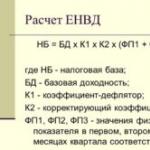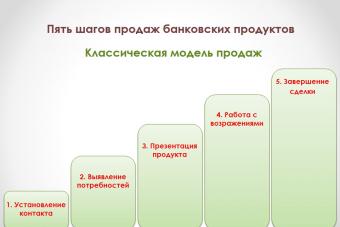A drug: PLATIFILLIN (PLATYPHYLLINE)
Active ingredient: platyphylline
ATX code: A03AX
KFG: Antispasmodic with myotropic and m-anticholinergic action
Reg. number: R No. 002651/01
Date of registration: 01.08.08
The owner of the reg. acc.: MOSHIMFARMPREPARATY them. N.A. Semashko JSC (Russia)
PHARMACEUTICAL FORM, COMPOSITION AND PACKAGING
1 ml - ampoules (10) complete with an ampoule knife or a scarifier - packs of cardboard.
DESCRIPTION OF THE ACTIVE SUBSTANCE.The scientific information provided is general and cannot be used to make a decision on the possibility of using a particular medicinal product.
PHARMACHOLOGIC EFFECT
Blocker of m-cholinergic receptors. Compared with atropine, it has a less pronounced effect on peripheral m-cholinergic receptors (in terms of its effect on smooth muscle cells of the digestive tract and the circular muscle of the iris, it is 5-10 times weaker than atropine). By blocking m-cholinergic receptors, it disrupts the transmission of nerve impulses from postganglionic cholinergic nerves to the effector organs and tissues innervated by them (heart, smooth muscle organs, external secretion glands); also inhibits n-cholinergic receptors (much weaker). The anticholinergic effect is more pronounced against the background of an increased tone of the parasympathetic part of the autonomic nervous system or the action of m-cholinergic stimulants.
To a lesser extent than atropine, causes tachycardia, especially when used in high doses. By reducing the influence of n.vagus, it improves the conduction of the heart, increases the excitability of the myocardium, and increases the minute volume. It has a direct myotropic antispasmodic effect, causes the expansion of small vessels of the skin. In high doses, it depresses the vasomotor center and blocks the sympathetic ganglia, as a result of which the vessels dilate and blood pressure decreases (mainly with intravenous administration). Weaker than atropine inhibits the secretion of endocrine glands; causes a pronounced decrease in the tone of smooth muscles, the amplitude and frequency of peristaltic contractions of the stomach, duodenum, small and large intestine, a moderate decrease in the tone of the gallbladder (in persons with hyperkinesia of the biliary tract); with hypokinesia - the tone of the gallbladder rises to a normal state. Causes relaxation of the smooth muscles of the uterus, bladder and urinary tract; having an antispasmodic effect, eliminates pain. Relaxes the smooth muscles of the bronchi, caused by an increase in the tone of n.vagus or cholinergic stimulants, increases the volume of breathing, inhibits the secretion of the bronchial glands; reduces the tone of the sphincters.
When instilled into the conjunctival sac of the eye and parenteral administration causes pupil dilation due to relaxation of the circular muscle of the iris. At the same time, intraocular pressure rises and accommodation paralysis occurs (relaxation of the ciliary muscle of the ciliary body). In comparison with atropine, the effect on accommodation is less pronounced and shorter. It excites the brain and respiratory center, to a greater extent - the spinal cord (in high doses, convulsions, depression of the central nervous system, vasomotor and respiratory centers are possible). Penetrates through the BBB.
PHARMACOKINETICS
After oral administration, it is well absorbed from the gastrointestinal tract. It undergoes hydrolysis with the formation of platinecin and platinic acid.
INDICATIONS
Peptic ulcer of the stomach and duodenum, pylorospasm, cholecystitis, cholelithiasis, intestinal colic, renal colic, biliary colic; bronchial asthma (to prevent broncho- and laryngospasm), bronchorrhea; algomenorrhea; spasm of the cerebral arteries; angiotrophoneurosis; arterial hypertension, angina pectoris (as part of combination therapy).
Pupil dilation for diagnostic purposes (including examination of the fundus, determination of the true refraction of the eye); acute inflammatory eye diseases (including iritis, iridocyclitis, keratitis), eye injuries.
DOSING MODE
Applied inside, parenterally (s / c, / in), rectally, topically in ophthalmology.
The dose depends on the indications, the route of administration, the age of the patient.
SIDE EFFECT
From the digestive system: dry mouth, thirst, intestinal atony.
From the side of the cardiovascular system: decrease in blood pressure, tachycardia.
From the side of the central nervous system and peripheral nervous system: CNS excitation, dizziness, dilated pupils, accommodation paralysis, headache, photophobia, convulsions, acute psychosis.
From the urinary system: difficulty urinating, urinary retention.
Others: lung atelectasis.
Adverse reactions are most likely when using platyfillin in high doses.
CONTRAINDICATIONS
Hypersensitivity to platifillin.
PREGNANCY AND LACTATION
Data on the safety of the use of platyfillin during pregnancy and lactation (breastfeeding) are not available.
SPECIAL INSTRUCTIONS
Use with caution in patients with diseases of the cardiovascular system, in which an increase in heart rate may be undesirable: atrial fibrillation, tachycardia, chronic heart failure, ischemic heart disease, mitral stenosis, arterial hypertension, acute bleeding; with thyrotoxicosis (possibly increased tachycardia); elevated temperature (may still rise due to suppression of the activity of the sweat glands); with reflux esophagitis, hiatal hernia, combined with reflux esophagitis (decrease in motility of the esophagus and stomach and relaxation of the lower esophageal sphincter can slow gastric emptying and increase gastroesophageal reflux through the sphincter with impaired function); in diseases of the gastrointestinal tract accompanied by obstruction - esophageal achalasia, pyloric stenosis (possible decrease in motility and tone, leading to obstruction and retention of stomach contents), intestinal atony in elderly patients or debilitated patients (possible development of obstruction), paralytic ileus; with an increase in intraocular pressure - closed-angle (mydriatic effect, leading to an increase in intraocular pressure, can cause an acute attack) and open-angle glaucoma (mydriatic effect can cause some increase in intraocular pressure; therapy may need to be adjusted); with nonspecific ulcerative colitis (high doses can inhibit intestinal motility, increasing the likelihood of paralytic ileus, in addition, the manifestation or exacerbation of such a severe complication as toxic megacolon is possible); with dry mouth (long-term use may cause a further increase in the severity of xerostomia); with liver failure (decreased metabolism) and renal failure (risk of side effects due to reduced excretion); in chronic lung diseases, especially in young children and debilitated patients (a decrease in bronchial secretion can lead to thickening of secretions and the formation of plugs in the bronchi); with myasthenia gravis (the condition may worsen due to inhibition of the action of acetylcholine); prostatic hypertrophy without urinary tract obstruction, urinary retention or a predisposition to it, or diseases accompanied by urinary tract obstruction (including the bladder neck due to prostatic hypertrophy); with gestosis (possibly increased arterial hypertension); brain damage in children (CNS effects may be exacerbated); Down's disease (possibly unusual dilation of the pupils and increased heart rate), cerebral palsy (the reaction to anticholinergics may be most pronounced).
Influence on the ability to drive vehicles and control mechanisms
It is necessary to refrain from potentially hazardous activities that require increased attention and speed of psychomotor reactions.
DRUG INTERACTIONS
With simultaneous use with haloperidol in patients with schizophrenia, a decrease in the antipsychotic effect is possible.
Platifillin is an antagonist of prozerin.
With simultaneous use, the duration of the hypnotic effect of phenobarbital, sodium etaminal, magnesium sulfate increases.
With simultaneous use with other m-anticholinergics, as well as with drugs with m-anticholinergic activity (including amantadine, haloperidol, phenothiazine, MAO inhibitors, tricyclic antidepressants, some antihistamines), the risk of side effects increases.
Morphine enhances the inhibitory effect of platifillin on the cardiovascular system.
With simultaneous use with MAO inhibitors, a positive chrono- and bathmotropic effect is observed; with cardiac glycosides - a positive bathmotropic effect.
With pain associated with spasms of smooth muscles, the action of platyfillin is enhanced by analgesics, sedatives and anxiolytics, with vascular spasms - hypotensive and sedatives.
Gross formula
C 18 H 27 NO 5Pharmacological group of the substance Platifillin
Nosological classification (ICD-10)
CAS code
480-78-4Characteristics of the substance Platifillin
The alkaloid of the ragwort (rhomboid or broad-leaved).
White crystalline powder of bitter taste, easily soluble in water (1:5 hot, 1:10 cold), slightly soluble in alcohol. pH 0.2% solution - 3.6-4.0.
Pharmacology
pharmachologic effect- antispasmodic, vasodilating, sedative.It blocks m-cholinergic receptors and has a direct relaxing effect on smooth muscles. Expands blood vessels, lowers the tone of the smooth muscles of the bile ducts and gallbladder, bronchi, causes mydriasis.
Quickly and fairly completely absorbed in the gastrointestinal tract. Easily passes through histohematic barriers, cellular and synaptic membranes. With the introduction of large doses, it accumulates in the tissues of the central nervous system in significant concentrations. It is excreted by the urinary and digestive systems. With the correct appointment (doses, intervals between doses) does not accumulate.
Application of the substance Platifillin
Spasms of smooth muscles in gastric and duodenal ulcers, intestinal, hepatic and renal colic, bronchial asthma, hypertension, angina pectoris, spasms of cerebral vessels, pain in pancreatitis, pancreatic coma, biliary dyskinesia, reflux esophagitis, bradyarrhythmia, poisoning acetone, boric acid, strong acids, arsenic, reserpine, diarrhea (urgent urge), in ophthalmic practice - to dilate the pupil for diagnostic and therapeutic purposes.
Contraindications
Glaucoma, liver and kidney failure, paralytic ileus or intestinal atony, ulcerative colitis, myasthenia gravis.
Side effects of the substance Platifillin
Dry mouth, dilated pupils, disturbance of accommodation, palpitations, decreased blood pressure, shortness of breath, intestinal atony, urinary retention, agitation, convulsions.
Interaction
Increases the duration of the hypnotic effect of phenobarbital and sodium etaminal, blocks the effects of prozerin, increases the intake of H2-histamine lytics, digoxin and riboflavin (slows peristalsis and improves absorption). Adrenomimetics (increase mydriasis) and nitrates potentiate an increase in intraocular pressure, amizil, diphenhydramine, tricyclic antidepressants, quinidine sulfate, novocainamide, disopyramide, isoniazid, MAO inhibitors, midantan - anticholinergic activity. Eliminates bradycardia, nausea and vomiting caused by morphine, bradycardia when taking verapamil.
Overdose
Symptoms: dry mouth, hoarseness, impaired swallowing, dilated pupils with no reaction to light, tachycardia, hyperthermia, reddening of the skin, CNS excitation with subsequent depression, impaired consciousness, hallucinations, convulsive syndrome, respiratory failure, intestinal paresis, acute urinary retention.
Platifillin belongs to the pharmacological group of myotropic antispasmodics, as well as anticholinergics. The drug is widely used in modern medicine to combat disorders of the digestive system and gastrointestinal tract, having a calming effect on the vascular centers. In addition, Platifillin can be used to treat other pathologies. Indications for the use of the drug are ulcerative lesions of the gastrointestinal tract, spasmodic contractions in the internal organs, hypertension, cholelithiasis, colic in the liver, kidneys, intestines and bronchial asthma.1. Pharmacological action
A drug that blocks acetylcholine m-receptors, resulting in relaxation of smooth muscles.2. indications for use
- Stomach ulcer;
- Inflammation of the gallbladder;
- Colicky pains in the intestines;
- Colicky pains in the gallbladder;
- Profuse sputum when coughing;
- Spasm of the arteries of the brain;
- Increased blood pressure;
- Pupil dilation for the purpose of making a diagnosis;
- Various eye injuries;
- Peptic ulcer of the duodenum;
- Spasm of the pyloric stomach;
- Stones in the gallbladder;
- Colicky pains in the kidneys;
- Warnings of bronchial and pharyngeal spasm with;
- Pain during menstruation;
- Prolonged spasm of small arteries;
- (as part of the medicinal complex);
- Various acute inflammatory eye diseases.
3. How to use
The dosage of Platifillin depends on the disease, the method of administration of the drug, the sex and age of the patients and is determined by the attending physician.Application Features:
At the time of treatment with Platifillin, it is necessary to refrain from engaging in vigorous activities.
4. Side effects
- Cardiovascular system: increased heart rate, lowering blood pressure;
- Urinary system: urinary retention, difficulty urinating;
- Digestive system: thirst, dryness of the oral mucosa, decreased intestinal tone;
- Central and peripheral nervous system: increased excitation of the central nervous system, headaches, convulsive syndrome, acute psychosis;
- Sense organs: dilated pupils, photophobia, inability to constrict or dilate pupils depending on the intensity of light;
- Respiratory system: lung collapse.
5. Contraindications
- Individual intolerance to Platifillin or its components;
- Simultaneous use of the drug with Prozerin;
- Hypersensitivity of Platifillin or its components.
6. During pregnancy and lactation
Not recommended the use of Platifillin during pregnancy and lactation.7. Interaction with other drugs
Simultaneous use of Platifillin with:- Haloperidol leads to a decrease in drug action;
- Sodium etaminal, Phenobarbital or Magnesium sulfate leads to an increase in their hypnotic effect;
- Morphine leads to increased inhibition of the cardiovascular system;
- monoamine oxidase blockers leads to disturbances in the activity of the heart;
- sedative drugs, painkillers or anxiolytic drugs leads to an increase in the action of Platifillin.
8. Overdose
An overdose of Platifillin is not described.9. Release form
Solution for injection, 2 mg / 1 ml - amp. 5, 10, 20 or 500 pieces; 0.2% (2 mg / 1 ml) - amp. 10 pieces.Tablets, 5 mg - 10, 20 or 30 pieces; 5 mg + 20 mg - 10 pcs.
10. Storage conditions
Platifillin is stored in a dry, dark place.11. Composition
1 ml solution:
- platyfillin hydrotartrate - 2 mg.
1 tablet:
- platyfillin hydrotartrate - 5 mg.
12. Terms of dispensing from pharmacies
The drug is released according to the prescription of the attending physician.Found an error? Select it and press Ctrl + Enter
* Instructions for medical use for the drug Platifillin published in free translation. THERE ARE CONTRAINDICATIONS. BEFORE USE, IT IS NECESSARY TO CONSULT WITH A SPECIALIST
Dosage form:Solution for subcutaneous administration.
Compound:1 ml contains:
Active substance: platyfillin hydrotartrate - 2.0 mg.
Excipients: water for injection - up to 1 ml.
Description:Colorless transparent liquid.
Pharmacotherapeutic group:M-anticholinergic. ATX:A.03.A.A Synthetic anticholinergics - esters with a tertiary amino group
Pharmacodynamics:M-anticholinergic, in comparison with atropine, has a lesser effect on peripheral m-cholinergic receptors (in terms of its effect on smooth muscle cells of the gastrointestinal tract (GIT) and the circular muscle of the iris, it is 5 to 10 times weaker than atropine). By blocking m-cholinergic receptors, it disrupts the transmission of nerve impulses from postganglionic cholinergic nerves to the effector organs and tissues innervated by them (heart, smooth muscle organs, external secretion glands); suppresses, but to a lesser extent, n-cholinergic receptors.
The anticholinergic effect is more pronounced against the background of an increased tone of the parasympathetic part of the autonomic nervous system or the action of m-cholinergic stimulants. To a lesser extent than, causes tachycardia, especially when used in large doses. By reducing the influence of n.vagus, it improves the conduction of the heart, increases the excitability of the myocardium, and increases the minute volume of blood.
It has a direct myotropic antispasmodic effect, causes the expansion of small vessels of the skin. In high doses, it depresses the vasomotor center and blocks the sympathetic ganglia, as a result of which the vessels dilate and blood pressure decreases (mainly when administered intravenously).
Weaker than atropine inhibits the secretion of endocrine glands; causes a pronounced decrease in the tone of smooth muscles, the amplitude and frequency of peristaltic contractions of the stomach, duodenum, small and large intestine, a moderate decrease in the tone of the gallbladder (in persons with hyperkinesia of the biliary tract); with hypokinesia - the tone of the gallbladder rises to normal content.
Causes relaxation of the smooth muscles of the uterus, bladder and urinary tract; having an antispasmodic effect, eliminates pain. Relaxes the smooth muscles of the bronchi, caused by an increase in the tone of n.vagus or cholinergic stimulants, increases the minute volume of breathing, inhibits the secretion of the bronchial glands; reduces the tone of the sphincters.
Causes pupil dilation due to relaxation of the circular muscle of the iris. At the same time, intraocular pressure rises and accommodation paralysis occurs (relaxation of the ciliary muscle of the ciliary body). In comparison with atropine, the effect on accommodation is less pronounced and shorter in time.
It excites the brain and respiratory center, to a greater extent - the spinal cord (in high doses, convulsions, depression of the central nervous system (CNS), vasomotor and respiratory centers are possible). Penetrates through the blood-brain barrier.
Indications:Peptic ulcer of the stomach and duodenum, pylorospasm, cholecystitis, cholelithiasis. intestinal, renal and biliary colic; bronchial asthma (to prevent broncho- and laryngospasm), bronchorrhea; algomenorrhea; spasm of the cerebral arteries; angiotrophoneurosis; arterial hypertension, angina pectoris (as part of combination therapy); dilatation of the pupil for diagnostic purposes (including examination of the fundus, determination of the true refraction of the eye); acute inflammatory eye diseases (including iritis, iridocyclitis, keratitis), eye injuries.
Contraindications:Hypersensitivity.
Carefully:Diseases of the cardiovascular system, in which an increase in heart rate (HR) may be undesirable: atrial fibrillation, tachycardia, chronic heart failure, coronary heart disease, mitral stenosis, arterial hypertension, acute bleeding.
Thyrotoxicosis (may increase tachycardia).
Increased body temperature (may still rise due to suppression of the activity of the sebaceous glands).
Reflux esophagitis, hiatal hernia associated with reflux esophagitis (decreased esophageal and gastric motility and relaxation of the lower esophageal sphincter may slow gastric emptying and increase gastroesophageal reflux through the dysfunctional sphincter).
Diseases of the gastrointestinal tract, accompanied by obstruction: achalasia and pyloric stenosis (possibly decreased motility and tone, leading to obstruction and retention of stomach contents).
Intestinal atony in elderly or debilitated patients and paralytic ileus (may develop obstruction).
Diseases with increased intraocular pressure: angle-closure glaucoma (mydriatic effect leading to an increase in intraocular pressure may cause an acute attack), open-angle glaucoma (mydriatic effect may cause some increase in intraocular pressure; therapy may need to be adjusted), age over 40 years (risk of undiagnosed glaucoma).
Non-specific ulcerative colitis (high doses may inhibit intestinal motility, increasing the likelihood of paralytic ileus; a complication such as megacolon may occur or worsen).
Dry mouth (prolonged use may further increase xerostomia).
Liver failure (decreased metabolism), renal failure (risk of side effects due to decreased excretion).
Chronic lung diseases, especially in young children and debilitated patients (a decrease in bronchial secretion can lead to thickening of the secretion and the formation of plugs in the bronchi).
Myasthenia gravis (the condition may worsen due to inhibition of acetylcholine).
Autonomic (autonomous) neuropathy (urinary retention and accommodation paralysis may increase), prostatic hypertrophy without urinary tract obstruction, urinary retention or a predisposition to it, or diseases accompanied by urinary tract obstruction (including bladder neck due to prostatic hypertrophy).
Preeclampsia (possibly increased arterial hypertension).
Brain damage in children (effects from the central nervous system may increase).
Down's disease (possibly unusual dilated pupils and increased heart rate).
Central palsy in children (reaction to anticholinergics may be most pronounced)
Pregnancy, lactation.
Dosage and administration:Subcutaneously.
For the relief of acute pain in gastric and duodenal ulcers, as well as intestinal, hepatic and renal colic, a prolonged attack of bronchial asthma, cerebral and peripheral angiospasms, adults are administered 1-2 ml of the drug 1-2 times a day (to expand blood vessels and reduce arterial pressure indicated intravenous administration).
For course treatment (10-20 days), 1-2 ml of the drug is administered subcutaneously 2-3 times a day.
The highest dose for adults: single -10 mg, daily - 30 mg,
Single doses for children per 1 kg of body weight:
- newborns and infants - 0.03 5 m g / kg (0.0175 ml / kg);
- 1-5 years - 0.03 mg / kg (0.015 ml / kg);
- 6-10 years - 0.02.5 mg / kg (0.0125 ml / kg);
- 11-14 years old - 0.02 mg / kg (0.01 ml / kg).
Dry mouth, thirst, lowering blood pressure, mydriasis, accommodation paralysis, tachycardia, intestinal atony, dizziness, headache, photophobia, convulsions; urinary retention; acute psychosis (in high doses); lung atelectasis.
Overdose:Symptoms: paralytic ileus, acute urinary retention (in patients with prostatic hyperplasia), accommodation paralysis, increased intraocular pressure; dryness of the mucous membrane of the mouth, nose, throat, difficulty swallowing, speech, mydriasis (until the iris disappears completely), tremor, convulsions, hyperthermia, agitation, depression of the central nervous system, suppression of the activity of the respiratory and vasomotor centers.
Treatment: forced diuresis, parenteral administration of cholinergic stimulants and anticholinesterase agents. With hyperthermia - wet rubdowns, antipyretics; when excited - intravenous administration of sodium thiopental; with mydriasis - locally, in the form of eye drops. In the event of an attack of glaucoma, a 1% solution of pilocarpine is immediately instilled into the conjunctival sac every hour, 2 drops and subcutaneously -1 ml of a 0.05% solution of Prozerin () 3-4 times a day.
Interaction:Enhances the sedative and hypnotic effect of phenobarbital, magnesium sulfate. Other m-anticholinergics, phenothiazine, monoamine oxidase inhibitors, tricyclic antidepressants, some antihistamines increase the risk of side effects. Antagonism - with anticholinesterase drugs. enhances the inhibitory effect on the cardiovascular system; monoamine oxidase inhibitors - positive chrono- and bathmotropic effects; cardiac glycosides - positive bathmotropic action; heaney Dean,
- a drug with a sedative, vasodilating and antispasmodic effect. It has an anticholinergic dose-dependent effect, that is, smaller doses inhibit the secretion of the salivary and bronchial glands, sweating, accommodation of the eyes, causing dilation of the pupils, an increase in heart rate.
While large doses reduce the contractile activity of the alimentary tract, including the biliary tract and gallbladder, in addition - the urinary tract and inhibits gastric secretion.
In this article, we will consider why doctors prescribe Platifillin, including instructions for use, analogues and prices for this drug in pharmacies. Real REVIEWS of people who have already used Platifillin can be read in the comments.
Platifillin is produced in the form of a solution for subcutaneous administration: a colorless, transparent liquid (1 ml in ampoules; 1, 2, 5 or 10 ampoules complete with an ampoule knife, 1 set in a cardboard pack). The combined product with papaverine is available in the form of white tablets - 10 pcs. in blisters.
- One tablet contains a mass of 0.005 g plus 0.02 g. The list of excipients includes: potato starch, calcium stearate, sugar, talc.
- 1 ampoule contains 1 ml of a clear, colorless solution intended for injection, platyfillin hydrotartrate (2 mg). As an auxiliary substance - distilled.
Pharmacological action: has a sedative, antispasmodic, vasodilating (vasodilating) effect.
Indications for use
According to the instructions, Platifillin is indicated for the following diseases and disorders:
- bronchorrhea;
- , cholelithiasis;
- spasm of the cerebral arteries;
- pylorospasm, intestinal, biliary and hepatic colic;
- peptic ulcer of the stomach and duodenum;
- (for the prevention of bronchospasm and laryngospasm);
- and (as part of complex therapy).
The indications of Platifillin include some ophthalmic diseases, in particular, injuries and acute inflammatory diseases of the eyes.
pharmachologic effect
According to the instructions, Platifillin is a blocker of m-cholinergic receptors and has an antispasmodic effect on the smooth muscles of the digestive tract and bronchi, and also has a weak sedative (sedative) effect. This drug reduces the secretion of bronchial, salivary, lacrimal and sweat glands. In addition, Platifillin is able to dilate the pupil and cause moderate accommodation paralysis. This drug may increase intraocular pressure.
Instructions for use
According to the instructions for use, Platifillin can be administered orally, parenterally, rectally and topically, in the form of eye drops.
S / c, for the relief of spastic pain, a prolonged attack of bronchial asthma, cerebral and peripheral angiospasms - 1-2 ml of a 0.2% solution of Platyfillin 1-2 times a day (for vasodilatation and lowering blood pressure, intravenous administration is indicated). Children: newborns and infants - 0.035 mg / kg (0.0175 ml / kg), 1-5 years - 0.03 mg / kg (0.015 ml / kg), 6-10 years - 0.025 mg / kg (0.0125 ml / kg), 11 -14 years - 0.02 mg / kg (0.01 ml / kg).
- Inside, 3-5 mg of Platifillin (or 10-15 drops of 0.5% solution) 2-3 times a day; in candles - 0.01 g 2 times a day.
- In microclysters - 20 drops of a 0.5-1% solution 2-3 times a day. The course of treatment is 10-15-20 days.
- In ophthalmology - 1% solution for diagnostic purposes and 2% solution for therapeutic purposes. Children - inside, 0.2-3 mg, depending on age.
Contraindications
In accordance with the instructions for Platifillin, the use of the drug is contraindicated in:
Side effects
According to the instructions, Platifillin can cause such side reactions as:
- On the part of the digestive system: thirst, dryness of the oral mucosa, decreased intestinal tone.
- From the side of the cardiovascular system: lowering blood pressure,.
- From the side of the central and peripheral nervous system: increased excitation of the central nervous system, headaches, convulsive syndrome, acute course.
- From the urinary system: difficulty urinating, urinary retention.
- Others: .
Adverse reactions are most likely when using platyfillin in high doses.





